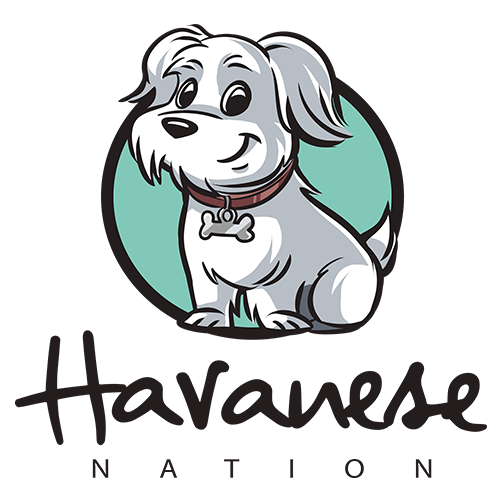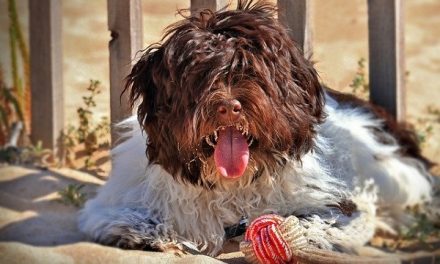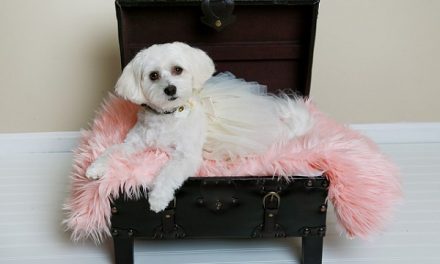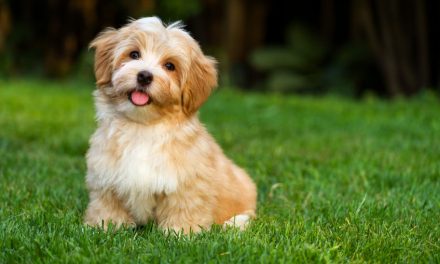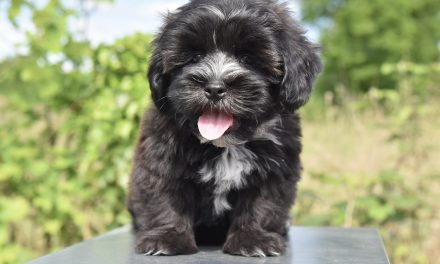
IG: noelle.bichonhavanese
If small, sporty and smart is your cup of tea, you are going to love the Bichon Havanese. Part Bichon Frise, part Havanese, this hybrid dog breed didn’t have to look far to find their fan base.
For starters, it is hard to imagine two purebred dog breeds with more complementary traits. Of course, this might prompt you to wonder – why crossbreed them at all?
Crossbreeding programs have arisen largely due to growing concerns about the health and diversity in certain popular purebred dog breed lines.
With concentrated breeding for specific traits (often those of appearance), certain genetic health issues have been unwittingly coded into the gene pool more strongly than they might have been otherwise.
By crossing two complimentary dog breeds, both purebred breed lines are strengthened for future generations. This means a stronger, healthier, happier, longer-lived companion canine for you and new hope for health-compromised purebred dog breeds in the near future.
So now let’s dive in and learn all about the stunning, sturdy, and sociable Bichon Frise Havanese cross, the Bichon Havanese!
The History of the Bichon Frise and the Havanese
Perhaps the best way to get to know any newer hybrid dog breed is to first dive deep into the history of each purebred parent dog.
Not only does this give you the backstory on the most important traits of each parent dog, but it is a great reminder that nearly all modern purebred dog breeds were once hybrids themselves.
Even iconic dog breeds are largely human-made creations, crafted by strategically crossing two different dog breeds together at various points in time. In every case, the end goal has always been the same: creating a whole new breed of dog.
The Bichon Havanese is no exception. But as a much newer breed-in-progress, you will see a lot more of the individual traits of
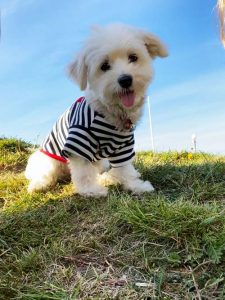
IG: noelle.bichonhavanese
each purebred parent dog, the Bichon Frise and the Havanese, in each Bichon Havanaise puppy.
This also means that it is important to select the Bichon Havanaise breeder you work with carefully. Different hybrid dog breeders may choose to work with different generations of crosses. What does this mean, precisely?
As Breeding Business explains, it means that one breeder may be breeding exclusively for 50/50 first generation (F1) Bichon and Havanese puppies where each parent dog is a purebred from the Bichon Frise and Havanese lines, respectively.
Another dog breeder may be breeding exclusively first-generation back-crossed (F1b) Bichon and Havanese, where one parent dog is a purebred Bichon Frise or Havanese and the other is an F1 back-cross Bichon and Havanese.
Still, another dog breeder may be breeding exclusively for later generations (F2, F2b, F3, et al) where both parent dogs are essentially already hybrid to some degree.
Earlier generations (F1, F1b) will show more diversity between individual puppies even in a single litter. This is because there is no accurate way to predict in advance which traits a given puppy will inherit from each parent dog.
This also means that if you have your heart set on choosing a Bichon Havanaise puppy with certain traits, whether those be coat type or color, size, weight, temperament, et al, your best bet is to work with a later-generation hybrid dog breeder (F2 or later).
With later-generation litters, you can expect to see a great deal more predictable uniformity in puppies from each litter. Since many breeders reserve puppies before their parent dogs are even bred, this will be the best way to ensure your puppy inherits the traits that are most important to you.
So now let’s take that deep dive into the history of each purebred parent dog, the Bichon Frise, and the Havanese.
Bichon Frise history.
The Bichon Frise is the 46th most popular (out of 195 American Kennel Club registered dog breeds) purebred dog breed in America today.
If you have ever seen a small, sprightly dog walking along that literally looks like a cloud on legs, it is likely it was the Bichon Frise you were looking at.
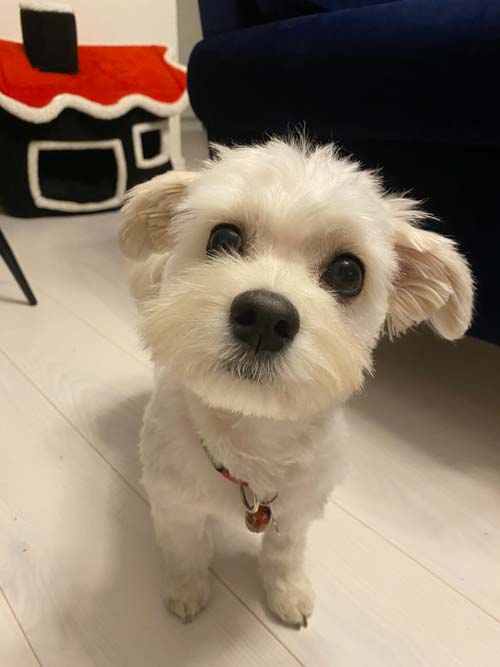
IG: noelle.bichonhavanese
The Bichon Frise hails from the Barbichon family of dogs. Relatives include the Maltese, the Bolognese, and – wait for it – the Havanese.
All three of these ancient dog breeds are thought to originally hail from somewhere in the Mediterranean, and later from the remote Canary Islands, a small island chain with Spanish heritage that is located just to the northwest of Africa.
According to the Bichon Frise Club of America, by the 13th century, a cohort of European nobles from Italy, France and later England had so fallen in love with these dogs that they become staples of life at courts around the world.
Portraits from that time period show some very pampered pooches, and indeed the word “bichonner” literally translates to mean “to pamper.” The modern name, Bichon Frise, translates to mean “curly lap dog.”
Havanese history.
The Havanese is the 24th most popular (out of 195 American Kennel Club registered dog breeds) purebred dog breed in America today.
As the Havanese Club of America points out, the Havanese is distinct in that it is both the national dog breed of Cuba and the only natural dog breed that can trace its lineage back to Cuba. The original breed name was Blanquito de la Habana, which translates literally as “Havana silk dog.”
While the Bichon Frise was making the rounds of the laps of European royals, the Havanese was staying put for over 300 years in the laps of Havanese nobles and the ultra-wealthy elite in that country.
Havanese managed to survive the ousting of Fidel Castro in 1959 because fleeing owners refused to leave their dogs behind. This is when the Havanese breed was introduced outside of Cuba and Americans in particular fell head over heels in love.
Like the Bichon Frise, the Havanese has been a favorite dog breed choice for celebrities from all walks of life.
Bichon Havanese: Personality and Temperament
The Bichon Frise and the Havanese are both outgoing, extroverted, and highly social dog breeds.
Both do similarly well with family members of all ages and can be trained to socialize with other well-behaved and calm family

IG: boelle.bichonhavanese
pets.
What is particularly fun about these dogs is that both breeds are super-smart and can easily be taught to do tricks. What is more, both dog breeds love to entertain people.
And both make excellent family watchdogs, barking only when there is just cause.
Bichon Havanais: Size, Height and Weight
The Bichon Frise and the Havanaise are quite complementary in terms of overall size, height, and weight. These are both dogs that can and will live quite happily in small spaces like apartments and condos.
They are essentially lap dogs and can make do quite well with indoor play and a handy nearby potty area.
Bichon Frise size, height, and weight.
The Bichon Frise is classified as a non-sporting dog breed by the American Kennel Club (AKC).
Size-wise, these dogs typically weigh between 12 and 18 pounds and stand between 9.5 and 11.5 inches tall in adulthood.
Havanese size, height, and weight.
The Havanese dog is also quite petite and is actually classified in the toy dog group by the American Kennel Club (AKC).
The Havanese adult dog typically weighs between seven and 13 pounds and stands 8.5 to 11.5 inches tall.
Bichon Frise Havanese size, height, and weight.
In terms of weight, height, and overall size, the Bichon Frise and the Havanese are highly complementary dog breeds.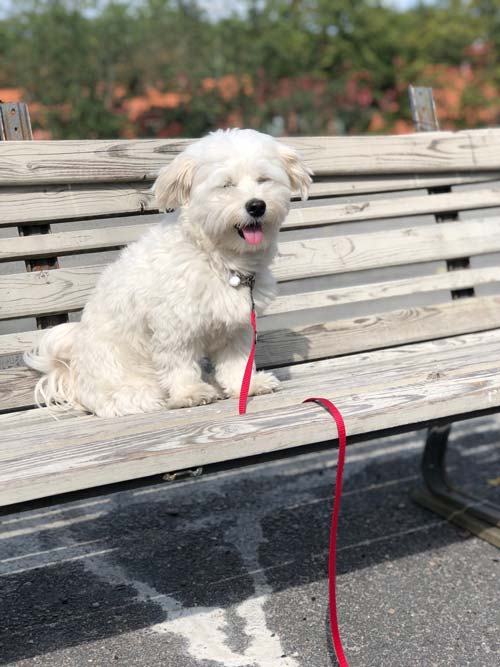
This is good news if you live in a small space and are seeking a small dog to join your family. You won’t have to worry about any big size surprises with a Bichon and Havanaise pairing.
Overall, you can expect your hybrid dog to weigh between 7 and 18 pounds and stand between 7.5 and 11.5 inches tall.
Bichon Havanese: Training and Exercise Needs
Now you know the Bichon Frise and Havanese are similar in size. But are they similar in energy levels, exercise, and training needs?
As it turns out, they are quite similar in all areas.
Bichon Frise training and exercise needs.
The Bichon Frise is considered to have moderate energy levels combined with a willingness to please “their” people and an extroverted personality.
Havanese training and exercise needs.
The Havanese has moderate energy levels and a strong drive to please “their” people along with a social, outgoing personality.
Bichon Frise Havanese training and exercise needs.
Since both the Bichon Frise and the Havanese have such complementary energy levels and approaches to training, you will likely have little trouble training and socializing a Bichon and Havanese cross as long as you use only positive training and reinforcement methods like treats, pats, playtime, and praise.
These dogs are far too smart to respond well to any negative (punishment-based) training methods.
Bichon Havanese: Shedding, Grooming and Coat Care
One area where you are going to need to be prepared to devote more time and attention to your dog is in grooming the coat.
Although the coats look quite different at first glance, both the Bichon Frise and the Havanese dog breeds have high-maintenance coat types.
Bichon Frise shedding, grooming, and coat care.
The Bichon Frise’s signature fluffy, curly coat is often described as “non-shedding” or even “hypoallergenic.” However, there is no such thing as a truly hypoallergenic dog breed. Nor is there such a thing as a non-shedding dog breed.
What there is – and the Bichon Frise is proof of this – is a coat type that appears to not shed. This is because the shed hair gets trapped in the surrounding coat and never falls down to the floor.
Unfortunately, with this type of coat, you need to spend a lot of time brushing and grooming to avoid the shed hair getting tangled up and turning into mats. Mats that are not brushed out promptly can get larger and cause irritation and infection to your dog’s skin.
Some owners like to learn how to do their dog’s grooming at home. But most Bichon Frise owners choose to take their pups to a professional groomer every four to six weeks. A groomer can also trim the nails, express the anal glands, and give a bath.
In between grooming appointments, you may need to at least brush your dog’s coat daily to avoid tangles forming. If you choose to keep your Bichon Frise in a short puppy clip, this can help cut down on some of the brushing chores
Havanese shedding, grooming, and coat care.
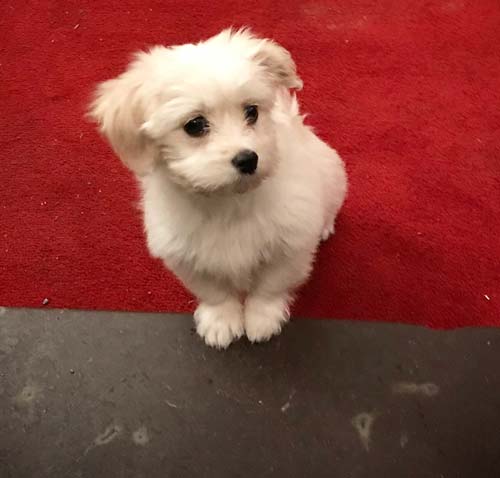
IG: noelle.bichonhavanese
Here again, the Havanese coat is often labeled as “non-shedding” and “hypoallergenic,” but neither is technically accurate. The Havanese will shed out hair, which will then get trapped in the surrounding coat and form tangles and mats.
Keeping your Havanese in a short puppy clip will definitely cut down on the amount of time you have to spend brushing and detangling your dog’s coat. As with the Bichon Frise, often Havanese owners like to have their dogs professionally bathed and groomed every month or so, although it is possible to learn these skills yourself.
Bichon Frise Havanese shedding, grooming, and coat care.
Depending on which coat type your puppy inherits, you may be dealing with a curly or straight hair coat. In either case, the coat will be long and single-layer. In either case, you will have brushing duties as often as daily to keep tangles and mats from forming.
And in either case, you will likely want to invest in a regular professional grooming or learn how to do these necessary tasks at home for your dog.
By working with a later-generation hybrid breeder, you can get a better sense of the coat type your puppy will grow up to display. If someone in your family is highly sensitive or allergic to pet dander, it may be helpful to do everything you can to accurately predict your new puppy’s adult coat type.
Bichon Havanese: Longevity and Health
As we mentioned in the introduction here earlier, certain purebred dog breed lines have become dangerously limited due to selective breeding for certain traits. Breeding for appearance confirmation to the officially approved breed standard is a particular culprit here.
Just by introducing new genetic diversity, the risk of certain known heritable (genetic) purebred health issues is automatically reduced.
Here again, the further into the hybrid breeding program you go (later generation breeders, specifically), the more genetic diversity is present, and the less risk you bear of selecting a puppy with undetected heritable health issues.
As a further measure of safety, you should always request that the breeder provide proof that the appropriate recommended or required health testing has been done on all parent dogs prior to breeding.
You can also check this on your own by researching through the CHIC (Canine Health Information Center) database.
This database is where breeders go to voluntarily contribute testing results to further the health of the breed as a whole. If a breeder has registered test results, you will be able to access them through CHIC.
Now we are going to take a closer look at the known heritable (genetic) health issues that can impact each parent dog breed, the Bichon Frise, and the Havanese.
Bichon Frise longevity and health.
According to the CHIC database, the Bichon Frise can potentially inherit and pass on the following known genetic health issues:
– Hip dysplasia.
– Patellar luxation.
– Eye issues.
– Cardiac issues.
– Legg-Calves-Perthes disease.
– Liver shunts.
– Diabetes.
– UTIs (bladder infections) and bladder stones (crystals).
The Bichon Frise Club of America Health Information Center states that the Bichon Frise often develops the following health issues as well:
– Dental disease.
– Cancer.
– Heart disease.
– Liver disease.
– Stomach problems.
The American Kennel Club Canine Health Foundation (AKCCHF) points out that cataracts (particularly juvenile onset) can also affect Bichon Frise dogs.
Havanese longevity and health.
According to the CHIC database, the Havanese dog breed can potentially inherit and pass on the following known genetic health issues:
– Hip dysplasia.
– Patellar luxation.
– Eye issues.
– Congenital deafness.
The Havanese Club of America outlines some additional potentially heritable health issues you should also be aware of so you can discuss them with the breeder.
– CD (Chondrodysplasia).
– Cardiac heart issues (congenital or adult onset).
– Thyroid issues.
– Sebaceous Adenitis.
When there are additional known health issues that have not been tested for, it does not necessarily mean that the breeder is being negligent. Sometimes it means that there is no standardized genetic test yet for a particular health issue.
Bichon Frise Havanese longevity and health.
What is most interesting about these lists of known heritable genetic health issues is that there are some similar issues and some that are unique to each breed.
What this means is that it is extremely important to only work with a hybrid breeder that conducts all the required and optional recommended health tests on their parent dogs prior to breeding.
Here, the health issues of most concern are as follows:
– Hip dysplasia.
– Patellar luxation.
– Eye issues.
Bichon Havanese: Is This the Right Dog for You?
Is the Bichon Frise and Havanese mix dog the right companion canine for you? Happily, both parent dogs can get along well with family members of all ages and make great watchdogs without being unwelcoming to friendly visitors.
As you likely have realized by now, it is hard to find anything not to love about these lively, sweet-natured lap dogs, with their cute faces and snuggly, cuddly bodies and sociable outgoing personalities.
Are you living with a Bichon Frise and Havanese mix dog? We’d love to hear your story in the comments!
